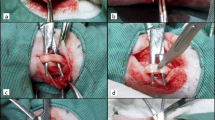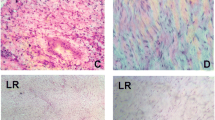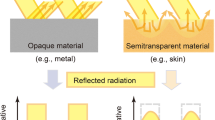Abstract
Physical factors and tissue characteristics determine the transmission of light through tissues. One of the significant clinical limitations of photobiomodulation is the quantification of fluence delivered at application sites and optical penetration depth in vivo. There is also the difficulty of determining the distances of the application points to cover a uniformly irradiated area. Thus, the aim was to evaluate in vivo the influence of melanin on light transmission of the 660 nm and 830 nm laser wavelengths on skin and tendon. Thirty young individuals of both sexes were recruited, divided into two groups based on melanin index, and submitted to photobiomodulation protocols in the posterior region of the elbow (skin-skin) and the calcaneus tendon (skin-tendon-skin). The irradiation area was evaluated using a homemade linear array of five sensors. We found significant transmission power values for different melanin indexes and wavelengths (p<0.0001). Also, different equipment can generate significant differences in the transmitted power at an 830-nm wavelength. Average scattering values are 14 mm and 21 mm for 660 nm, in higher and lower melanin index, respectively. For 830 nm, values of 20 mm and 26 mm are indicated. Laser light transmission in vivo tissues is related to wavelength, beam diameter, tissue thickness, and composition, as well as melanin index. The 830-nm laser presents higher light transmission on the skin than 660 nm. The distances between the application points can be different, with higher values for 830 nm than 660 nm.





Similar content being viewed by others
Data availability
It can be made available upon request.
Code availability
Not applicable.
References
Anders JJ, Arany PR, Baxter GD, Lanzafame RJ (2019) Light-emitting diode therapy and low-level light therapy are photobiomodulation therapy. Photobiomodul Photomed Laser Surg 37:63–65. https://doi.org/10.1089/photob.2018.4600
Cheng K, Martin LF, Slepian MJ et al (2021) Mechanisms and pathways of pain photobiomodulation: a narrative review. J Pain 22:763–777. https://doi.org/10.1016/j.jpain.2021.02.005
Kashiwagi S, Morita A, Yokomizo S et al (2023) Photobiomodulation and nitric oxide signaling. Nitric Oxide 130:58–68. https://doi.org/10.1016/j.niox.2022.11.005
Karu TI (2010) Multiple roles of cytochrome c oxidase in mammalian cells under action of red and IR-A radiation. IUBMB Life 62:607–610. https://doi.org/10.1002/iub.359
Nampo FK, Cavalheri V, dos Santos SF et al (2016) Low-level phototherapy to improve exercise capacity and muscle performance: a systematic review and meta-analysis. Lasers Med Sci 31:1957–1970. https://doi.org/10.1007/s10103-016-1977-9
Leal-Junior ECP, Vanin AA, Miranda EF et al (2015) Effect of phototherapy (low-level laser therapy and light-emitting diode therapy) on exercise performance and markers of exercise recovery: a systematic review with meta-analysis. Lasers Med Sci 30:925–939. https://doi.org/10.1007/s10103-013-1465-4
das Neves LMS, de Leite G PMF, Marcolino AM et al (2017) Laser photobiomodulation (830 and 660 nm) in mast cells, VEGF, FGF, and CD34 of the musculocutaneous flap in rats submitted to nicotine. Lasers Med Sci 32:335–341. https://doi.org/10.1007/s10103-016-2118-1
de Souza TR, de Souza AK, Garcia SB et al (2020) Photobiomodulation increases viability in full-thickness grafts in rats submitted to nicotine. Lasers Surg Med 52:449–455. https://doi.org/10.1002/lsm.23155
Kingsley JD, Demchak T, Mathis R (2014) Low-level laser therapy as a treatment for chronic pain. Front Physiol 5. https://doi.org/10.3389/fphys.2014.00306
Oueslati A, Lovisa B, Perrin J et al (2015) Photobiomodulation suppresses alpha-synuclein-induced toxicity in an AAV-based rat genetic model of Parkinson’s disease. PLoS One 10:e0140880. https://doi.org/10.1371/journal.pone.0140880
Hamblin MR (2018) Mechanisms and mitochondrial redox signaling in photobiomodulation. Photochem Photobiol 94:199–212. https://doi.org/10.1111/php.12864
Bjordal JM (2012) Low level laser therapy (LLLT) and world association for laser therapy (WALT) dosage recommendations. Photomed Laser Surg 30:61–62. https://doi.org/10.1089/pho.2012.9893
Anderson RR, Parrish JA (1981) The optics of human skin. J Investig Dermatol 77:13–19. https://doi.org/10.1111/1523-1747.ep12479191
Ash C, Dubec M, Donne K, Bashford T (2017) Effect of wavelength and beam width on penetration in light-tissue interaction using computational methods. Lasers Med Sci 32:1909–1918. https://doi.org/10.1007/s10103-017-2317-4
Barbosa RI, Guirro ECO, Bachmann L et al (2020) Analysis of low-level laser transmission at wavelengths 660, 830 and 904 nm in biological tissue samples. J Photochem Photobiol B 209:111914. https://doi.org/10.1016/j.jphotobiol.2020.111914
Fallah A, Mirzaei A, Gutknecht N, Demneh AS (2017) Clinical effectiveness of low-level laser treatment on peripheral somatosensory neuropathy. Lasers Med Sci 32:721–728. https://doi.org/10.1007/s10103-016-2137-y
Ökmen BM, Ökmen K (2017) Comparison of photobiomodulation therapy and suprascapular nerve-pulsed radiofrequency in chronic shoulder pain: a randomized controlled, single-blind, clinical trial. Lasers Med Sci 32:1719–1726. https://doi.org/10.1007/s10103-017-2237-3
Sasso LL, de Souza LG, Girasol CE et al (2020) Photobiomodulation in sciatic nerve crush injuries in rodents: a systematic review of the literature and perspectives for clinical treatment. J Lasers Med Sci 11:332–344. https://doi.org/10.34172/jlms.2020.54
Nussbaum EL, Van Zuylen J, Jing F (2007) Transmission of light through human skin folds during phototherapy: effects of physical characteristics, irradiation wavelength, and skin-diode coupling. Physiotherapy Canada 59:194–207. https://doi.org/10.3138/ptc.59.3.194
da Cruz LB, Girasol CE, Coltro PS et al (2023) Optical properties of human skin phototypes and their correlation with individual angle typology. Photobiomodul Photomed Laser Surg 41:175–181. https://doi.org/10.1089/photob.2022.0111
Cruz Junior LB, Girasol CE, Coltro PS et al (2023) Absorption and reduced scattering coefficient estimation in pigmented human skin tissue by experimental colorimetric fitting. J Opt Soc Am A 40:1680. https://doi.org/10.1364/JOSAA.489892
Cheong WF, Prahl SA, Welch AJ (1990) A review of the optical properties of biological tissues. IEEE J Quantum Electron 26:2166–2185. https://doi.org/10.1109/3.64354
Jacques SL (2013) Optical properties of biological tissues: a review. Phys Med Biol 58:R37–R61. https://doi.org/10.1088/0031-9155/58/11/R37
Bashkatov AN, Genina EA, Tuchin VV (2011) Optical properties of skin, subcutaneous, and muscle tissues: a review. J Innov Opt Health Sci 04:9–38. https://doi.org/10.1142/S1793545811001319
Bogdan Allemann I, Kaufman J (2011) Laser principles. Curr Probl Dermatol 42:7–23. https://doi.org/10.1159/000328236
Md Isa Z, Shamsuddin K, Bukhary Ismail Bukhari N et al (2016) The reliability of Fitzpatrick Skin Type Chart Comparing to Mexameter (Mx 18) in measuring skin color among first trimester pregnant mothers in Petaling District, Malaysia. Malaysian J Public Health Med 16:59–65
Niemz MH (2019) Matter acting on light. In: laser-tissue interactions. Springer International Publishing, Cham, pp 9–44
Mendenhall MJ, Nunez AS, Martin RK (2015) Human skin detection in the visible and near infrared. Appl Opt 54:10559. https://doi.org/10.1364/AO.54.010559
Berger VW, Zhou Y (2014) Kolmogorov–Smirnov test: overview. In: Wiley StatsRef: Statistics Reference Online. Wiley
McKight PE, Najab J (2010) Kruskal-Wallis test. In: The Corsini Encyclopedia of Psychology. Wiley, pp 1–1
Myers L, Sirois MJ (2006) Spearman correlation coefficients, differences between. In: Encyclopedia of Statistical Sciences. John Wiley & Sons, Inc, Hoboken, NJ, USA
Kolárová H, Ditrichová D, Wagner J (1999) Penetration of the laser light into the skin in vitro. Lasers Surg Med 24:231–235
Enwemeka CS (2000) Attenuation and penetration of visible 632.8nm and invisible infra-red 904nm light in soft tissues. Laser Ther 13:95–101. https://doi.org/10.5978/islsm.13.95
Joensen J, Øvsthus K, Reed RK et al (2012) Skin penetration time-profiles for continuous 810 nm and superpulsed 904 nm lasers in a rat model. Photomed Laser Surg 30:688–694. https://doi.org/10.1089/pho.2012.3306
Anders JJ, Wu X (2016) Comparison of light penetration of continuous wave 810 nm and superpulsed 904 nm wavelength light in anesthetized rats. Photomed Laser Surg 34:418–424. https://doi.org/10.1089/pho.2016.4137
de Jesus Guirro RR, de Oliveira Guirro EC, Martins CC, Nunes FR (2010) Analysis of low-level laser radiation transmission in occlusive dressings. Photomed Laser Surg 28:459–463. https://doi.org/10.1089/pho.2009.2524
de Jesus Guirro RR, de Carvalho G, Gobbi A et al (2020) Measurement of physical parameters and development of a light emitting diodes device for therapeutic use. J Med Syst 44:88. https://doi.org/10.1007/s10916-020-01557-y
Ferraresi C, Huang Y-Y, Hamblin MR (2016) Photobiomodulation in human muscle tissue: an advantage in sports performance? J Biophotonics 9:1273–1299. https://doi.org/10.1002/jbio.201600176
Salehpour F, Cassano P, Rouhi N et al (2019) Penetration profiles of visible and near-infrared lasers and light-emitting diode light through the head tissues in animal and human species: a review of literature. Photobiomodul Photomed Laser Surg 37:581–595. https://doi.org/10.1089/photob.2019.4676
Bordvik DH, Haslerud S, Naterstad IF et al (2017) Penetration time profiles for two class 3B lasers in in situ human Achilles at rest and stretched. Photomed Laser Surg 35:546–554. https://doi.org/10.1089/pho.2016.4257
Enwemeka CS (2009) Intricacies of dose in laser phototherapy for tissue repair and pain relief. Photomed Laser Surg 27:387–393. https://doi.org/10.1089/pho.2009.2503
Deng Z, Liu C, Tao W, Zhu D (2011) Improvement of skin optical clearing efficacy by topical treatment of glycerol at different temperatures. J Phys Conf Ser 277:012007. https://doi.org/10.1088/1742-6596/277/1/012007
Haslerud S, Naterstad IF, Bjordal JM et al (2017) Achilles tendon penetration for continuous 810 nm and superpulsed 904 nm lasers before and after ice application: an in situ study on healthy young adults. Photomed Laser Surg 35:567–575. https://doi.org/10.1089/pho.2017.4269
Hu D, van Zeyl M, Valter K, Potas JR (2019) Sex, but not skin tone affects penetration of red-light (660 nm) through sites susceptible to sports injury in lean live and cadaveric tissues. J Biophotonics 12. https://doi.org/10.1002/jbio.201900010
Henderson TA, Morries L (2015) Near-infrared photonic energy penetration: can infrared phototherapy effectively reach the human brain? Neuropsychiatr Dis Treat 2191. https://doi.org/10.2147/NDT.S78182
Jacques SL (2010) Optical assessment of cutaneous blood volume depends on the vessel size distribution: a computer simulation study. J Biophotonics 3:75–81. https://doi.org/10.1002/jbio.200900085
Turani Z, Fatemizadeh E, Blumetti T et al (2019) Optical radiomic signatures derived from optical coherence tomography images improve identification of melanoma. Cancer Res 79:2021–2030. https://doi.org/10.1158/0008-5472.CAN-18-2791
Funding
The present work was supported in part by The Sao Paulo Research Foundation – FAPESP (#2018/14955-6, #2017/25923-5, and 2011/07960-4), in part by the Coordination for the Improvement of Higher Education Personnel - Brazil (CAPES) – Financing Code 001, and in part by Scholarship from National Institute for Scholarship Management (INAGBE), Angola.
Author information
Authors and Affiliations
Contributions
All authors contributed to the study’s conception and design. Material preparation and data collection were performed by Carlos Eduardo Girasol, José Miguel Andrade Ferraz Moraes, and Damião Miranda Ngonga Alfredo. The analysis was performed by Carlos Eduardo Girasol and Luciano Bachmann. The first draft of the manuscript was written by Carlos Eduardo Girasol, and all authors commented on previous versions of the manuscript. All authors read and approved the final manuscript.
Corresponding author
Ethics declarations
Ethics approval
This study was approved by the Ethics Committee of the Clinics Hospital of the Medical School of Ribeirão Preto, under protocol 2.748.430.
Consent to participate
The volunteers were informed about the research project, its objectives, and its characteristics, and all signed the consent form.
Consent for publication
The volunteers and authors consent to publish this data and work.
Competing interests
The authors declare no competing interests.
Additional information
Publisher’s Note
Springer Nature remains neutral with regard to jurisdictional claims in published maps and institutional affiliations.
Rights and permissions
Springer Nature or its licensor (e.g. a society or other partner) holds exclusive rights to this article under a publishing agreement with the author(s) or other rightsholder(s); author self-archiving of the accepted manuscript version of this article is solely governed by the terms of such publishing agreement and applicable law.
About this article
Cite this article
Girasol, C.E., Moraes, J.M.A.F., Bachmann, L. et al. In vivo attenuation profile of 660 nm and 830 nm wavelengths on human elbow skin and calcaneus tendon of different phototypes. Lasers Med Sci 39, 24 (2024). https://doi.org/10.1007/s10103-023-03955-3
Received:
Accepted:
Published:
DOI: https://doi.org/10.1007/s10103-023-03955-3




